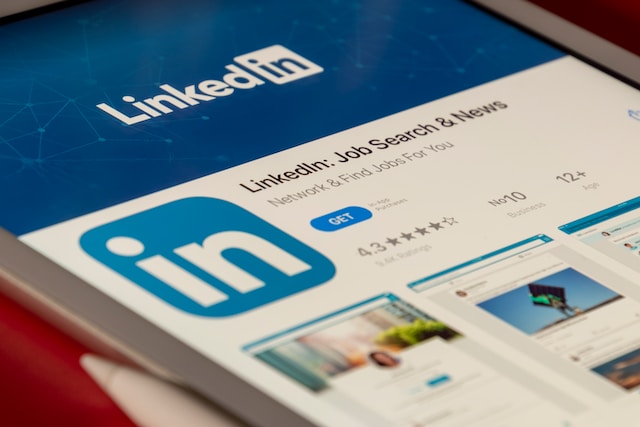What is Connectivism and Why do we need a new Learning theory?
Behaviorism, Cognitivism and Constructivism had one thing in common: Knowledge is individual and they focus on the internal process of learning. However, in the Digital era, we needed a new Learning Theory to respond to the new challenges and changes that technology brought.
In our current society, thanks to technology and Internet access, knowledge is developed fast and lasts only a few months. The amount of knowledge in the world has doubled in the past 10 years and is doubling every 18 months according to the American Society of Training and Documentation (ASTD). The learners need to recognize relevant and meaningful knowledge.
In Connectivism, knowledge can exist outside of an individual.
Knowledge is constantly changing and occurs in networks, not being controlled by any organization. The focus is not the content but the connections and it is not built inside us, but outside of ourselves.
Main theorists of Connectivism
Connectivism Theorists by Pilar GonzálezImplications of Connectivism for Instructional Design
Digital literacy is the ability to navigate and utilize digital technologies to find, evaluate, create, and communicate information effectively. Instructional designers need to include Digital literacy skills in his learning experiences.
Learners need to be able to use digital tools to solve problems, create projects or communicate effectively. Digital Literacy could have the same impact and importance as Literacy, because as Reading and Writing, it opens and enlarges new opportunities of knowledge through technology.
In addition to teach Digital Literacy, instructional designers should include the following strategies in their courses or learning experiences.
Connectivism in Instructional Design by Pilar GonzálezStrengths and limitations of Connectivism in Education
Connectivism focuses on the skills needed for our learners to thrive in the digital era. What abilities do we have to learn what we need, is more important that what we currently know.
Connectivism opens a lot of possibilities to Informal learning. This EdX course is a great example of how we can learn new content when we want, create learning communities and change careers. Connectivism allows people to be lifelong learners.

If knowledge is open and free to the learners. Would that mean that technology can substitute formal education? I do not think so! Formal education would still be necessary, and digital knowledge could be a supplement or addition for learners. In Education k-12, during and after the Covid-19 pandemic, educators and school districts incorporated digital tools in their lessons, expanding the knowledge for our students.
One limitation for Connectivism is the access to technology for developing countries. In the Digital era, knowledge is open and free, but learners need to have the digital equipment and skills to navigate in those networks. There is not equity in a learning theory when it can not be accessed by everyone.
Personal Learning Network (PLN)
As a learner myself in a Digital era, one of the most interesting resources is the Personal Learning Network (PLN), known as a virtual network of professionals and individuals with shared interests. It provides ongoing informal professional development that is personal and relevant, geared toward my needs and wants, in this case, Instructional Design.

In the last months, I have been gathering information about Instructional Design to decide if that was a professional career that fits with my interests and experience. In this research, I came up with leaders in ID, learning communities, LinkedIn groups and interesting connections that helped me to learn more about this field.
- LinkedIn groups:
- Instructional Designer.
- Teaching: A Path to L&D.
- Teacher to Tech.
- ID groups for bilingual professionals: I am still looking for professional groups in Spanish!
- Podcasts: I discovered professional podcasts a few months ago and listened to them during my commute.
- Projectified.
- The Dr. Luke Hobson Podcast.
- eLearning and Instructional Design for Beginners.
- Desarrollo Profesional by Mattia Pantaloni.
- Other Learning Communities:
- GLDC (Global Learning and Development Community): They have breakout rooms, mentors, and group discussions. A current member invited me because he saw one of my posts or comments on Linkedin. This is the power of networking!
- ID leaders that I follow:
- Devlin Peck website and videos: When I started to gather information to decide if I wanted to switch my career to Instructional Design, Devlin Peck’s videos were really effective and were able to answer most of my questions. I still read his articles when I have specific questions.
- Holly Owens: I love her posts and the job opportunities she shares for ID professionals. I also attended one of her webinars this summer, which was really inspiring and provided many resources.

Benefits of Personal Learning Networks
- Create a unique and flexible professional development environment that aligns with my needs at every moment.
- Control my professional learning.
- Develop connections and collaborate with ID experts across the globe. Following the Diversity principles, I am connecting not just with ID experts, but also with professionals in the same transition career journey as mine, so we can share experiences.
- Identify new ideas, interests and passions. I am updating my interests and I am able to be more specific in my needs and opportunities.
- Share insights, challenges, and quality resources. I just started a Blog to share my experience transitioning careers from educator to instructional designer and I share my progress in this edX course using my portfolio and LinkedIn.
- Stay current in research, technology, and best practices. I am subscribed to several websites and podcasts related to ID.